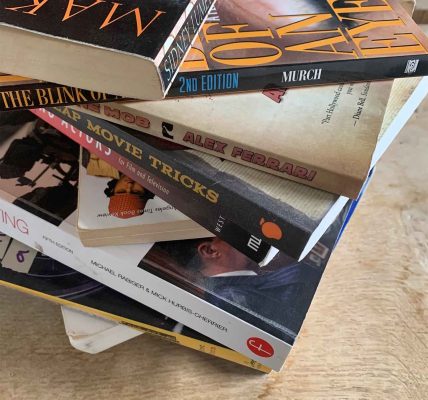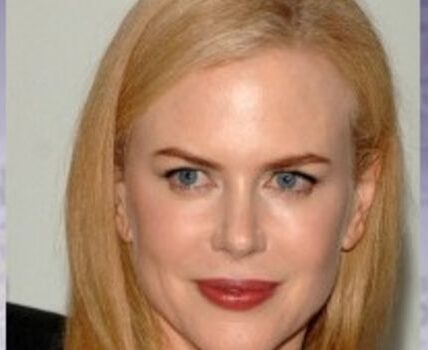Smashing the Mirror: Gender Inequality in Film – movieScope
Writing this in the early morning immediately after a long drawn-out Oscar night—complete with predictably plentiful tears, effusive thanks and not nearly enough near-the-knuckle gags from an over-cautious host—there’s really no sense of surprise in the outcome. No, not just over the shoo-in winners from Daniel Day-Lewis to Argo, but that all-too familiar sense of disappointment at the lack of women in contention for the major creative prizes. Yes, again…
For an organisation that took 81 years to etch a woman’s name on the Best Director statuette it’s not exactly a turn-up for the books, although to single out Oscar for criticism is probably hitting the wrong target. After all, the Academy voters are just holding up a mirror to the industry at large. It seems as if there’s been a groundswell of anger brewing this year that’s invariably been misdirected; as it’s not solely the fault of Oscar, it similarly wasn’t the fault of Cannes that not one of 2012’s 22 Palme d’Or nominated films was directed by a woman, leading to a red carpet intervention by ‘bearded’ feminists. Much as I’m a fan of the abseiling lesbian response to injustice, as I know from my day job at the British Council—part of which involves arranging selector screenings of new UK features for consideration by the teams from Cannes and other premier film festivals—the problem is less about festival selection or who gets awards, and more about what’s actually getting made in the first place, and by whom. Either way, what is a surprise is how this year, more than any other, the reaction across the board to Oscar’s testosterone-heavy shortlist has been less passive acceptance and considerably more call to action. Even I, as a lapsed feminist, suddenly feel energised and angry again. How is this still happening? Why? And what the hell are we all going to do about it
There are a couple of very basic questions here, starting at the very beginning: why, for example, are film schools chock-full of female talent in the lead creative fields? Across both UK and US film schools the number of female production, direction and screenwriting students is almost level—if not slightly edging above—the number of male counterparts. Yet the minute school’s out the stats drop off dramatically and the number of women translating that experience into feature films barely even registers
Even more bemusing than the fact that gender equality at film school apparently counts for nothing in the real world, is the way that short filmmakers—the emerging talent of the future—also balance nicely along gender lines as their careers begin. I see this with my own eyes: British Council, in collaboration with BFI, offers the Shorts Support Scheme, helping to take the most talented UK short filmmakers to present their work at major festivals. The numbers here again are just above even at this stage, with fractionally more women than men on the scheme, attracting attention and selection from international festivals. Then suddenly, for no clear reason, it all goes—and forgive the expression but it seems somehow apt— tits up, as the women filmmakers’ careers seem to atrophy while those male student-turned-short-filmmakers get the break, make the first features and become the next generation weaving their way through the crowds towards the Oscar podium.
Apparently, we have no idea why this happens. The reason most often trotted out is the one given by marketeers and audience analysts: that women filmmakers tend towards character and emotion (drama) where audiences respond better to plot and action (genre)—i.e., that the types of stories that women filmmakers typically pursue are not perceived as commercially viable. So is the female voice itself the problem? And if it is, what then? Of course this makes no sense; audiences are half women. What, then, are they responding to, and why? Rather than blindly accept such analysis we need our funders and policy makers to start delving beneath the surface. This means commissioning real grown-up research (which is, incredibly, still in short supply despite the best efforts of excellent campaigning organisations like WFTV) and taking an active stance in exploring ways to force change. There are many references to new talent development peppered throughout every recent policy document (from the DCMS policy review through to the BFI’s own Film Forever plan) and some welcome and detailed plans for increasing diversity along ethnic lines particularly. But the time has come for a similarly clear and well-reasoned policy line that specifically acknowledges the lack of women in film and, more significantly, puts a plan in place to right the balance
The Scandinavian film industry has tackled this head-on; public film funding is now doled out exactly evenly between male/female filmmakers. Those of us of a certain generation may balk at such positive discrimination, but perhaps we shouldn’t. What else but a dramatic about-face is going to have any chance of making any difference here when pussyfooting around the issue just isn’t having any effect
There have been some good UK industry experiments over the years led by UK Film Council, Skillset and others. I’m personally less convinced by those genre-based ‘women can write horror’ type interventions we’ve seen over the years; although definitely worth trying, they have probably proved little more than the fact that not everyone can be Katherine Bigelow. Other labs, like the BEV and Script Factory She Writes programme supporting eight emerging screenwriters which I was proud to be involved with, can pay dividends and resulted in an alumni including multi-award-winning Sally El Hosaini (My Brother the Devil) and up-and-coming Rachel Tunnard
The key thing here is that it’s by no means all negative. The Oscars and Cannes may have been a wasteland for women this year, but 50 per cent of the films in the US dramatic section of Sundance were directed by women and, for a second year running, a woman has carried home the main prize. Perhaps the indie world is getting its act together even if the studio mainstream is not; a telling post-Sundance New York Times headline summed it up perfectly: Female Directors Gain Ground, Slowly.
It’s also worth looking further afield for inspiration. In a surprising development, we might look for some lessons from the creative work emerging from the Arab Spring—that is from societies wildly behind the curve in terms of political or societal gender equality but suddenly, inexplicably, making leaps and bounds in terms of visible and prolific women filmmakers. As Birds Eye View champions Arab women filmmakers in a significant focus at the BFI this April, British Council will bring a delegation of 28 Arab women filmmakers and film professionals into London. We look forward to UK audiences and film communities responding to their work and ideas and potentially taking some direction from this unlikely source
Meanwhile the UK itself is slowly proving to be a hotbed of female directing talent with a roll call led by Arnold, Barnard, Gharavi, El Hosaini, Hogg, Morris, Morley and Ramsay. Wildly impressive, this lot are often asked to defend themselves as women directors (the great Jane Campion famously responds to the ‘what’s it like to be a women filmmaker’ question with a short, sharp, ‘I don’t know—I‘ve never been a male filmmaker’) and most of these great UK names have echoed her sentiment at some point in interviews over the last few years. It’s a bit like every other ‘minority’, from gay to black filmmakers: ‘I’m just a filmmaker so lose the adjective as it’s somehow demeaning.’ Maybe it’s time to go back one step and accept the compliment; after all it’s a bloody incredible against-the-odds achievement to be a female director, and perhaps we should own it. •









